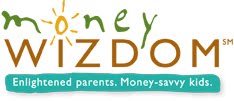 Our kids are constantly inundated with messages and images
for all kinds of things they could buy. Every day, TV, radio, magazines,
billboards, and kiosk advertisements clamor for their attention.
Our kids are constantly inundated with messages and images
for all kinds of things they could buy. Every day, TV, radio, magazines,
billboards, and kiosk advertisements clamor for their attention.
Evaluating all of those messages and determining what is
true and what may not be is pretty hard for young kids. One fun way to build kids’
advertising evaluation savvy is to have them make their own ads. See whether
your kids can tell truth from fiction when they build advertisements to your
specifications.
When to
do it
Rainy day
What to
do
Getting ready
1. Set up
your “advertising office” work area with papers, magazines, and art supplies.
2. Pull a
favorite packaged food item from your kitchen cupboards. Look for things with
some advertising messages on the packaging, like cereal or cookies.
Building the first ad: Truthful
1. Ask your
kids to make an ad for the selected item that would make you want to buy it.
2. Instruct
them to use real facts about the item that would make you really like it. These
must be true qualities and benefits of the product.
3. Show them
a sample ad, either real or one you’ve made to demonstrate the ad structure. Young
kids need clear examples to model.
4. Suggest that
each ad include the following elements:
·
Headline
·
At least one picture
·
A reason to buy
·
Price
If they like, your kids can add
a slogan or other “pitches” (like the familiar “Great new look, same great
taste!”).
Building the second ad: Not so truthful
1. Now have
them create a second ad that would make you want to buy the same item.
2. This
time they must try to trick you into wanting to buy it with “false advertising”
in words and pictures.
3. Show
them a sample ad that is not completely truthful.
4. Suggest
they use the same structure as in ad #1.
Consider looking at one ad (or more!) each week with your
kids to keep up their practice in evaluating the truthfulness of advertising
claims.
Things
you will need
·
Favorite packaged food items to promote with the
ads
·
Sample print or online ads or ones you make up to
help teach the key points of truthful and not-so-truthful ads
·
Magazines with lots of food images
·
Paper, colored pens and pencils
·
Glue
·
Tape
·
Scissors
Talk
about it
Was it hard for your kids to make up a good truthful ad? Was
it hard to make up an ad that was not so truthful? Why do you think people make
ads that are not truthful? How can we get better at evaluating ads?



